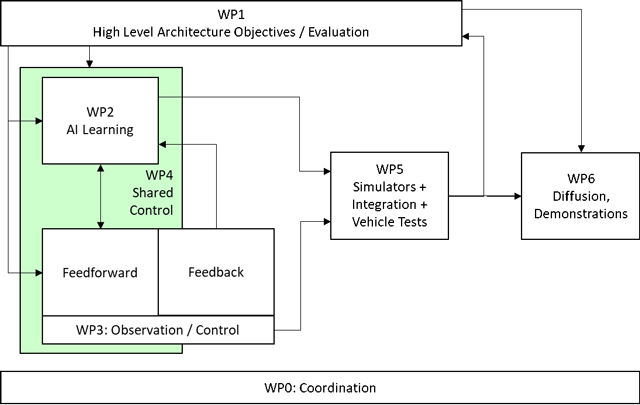
HM-Science project organization
WP1: High Level Architecture Objectives (LAMIH)
WP1 will define the main objectives and necessary steps, especially to identify methodologies and links between WP2 and WP3 and to prepare for WP4. The essential dimension of the task is to propose the initial architecture and the frameworks that will allow genericity, the most possible "car-independent and user/user-case independent".
WP2: Deep-learning-based human behavior and cognitive state identification (NTU)
In this work package, deep-learning-based human behavior and cognitive state identification algorithms will be designed.
WP3: Observation and Control (LAMIH)
For the general control strategy, the approach consists in using a trajectory generator based on the simulation of a virtual "vehicle + Driver". The idea is that it decouples from the use-case, therefore, it is more likely to be adaptable to different configurations.
WP4: Shared Control Strategy (LAMIH + NTU)
This Work Package is at the core of the project, on a methodological point-of-view, it represents the mixing between AI-learning and control, it should not only be Data-Driven but also Performance-Driven for feeding the Feedforward Controller part. The idea is to design a driving system able to anticipate and adapt its behavior, in order to define safe trajectories that better suits the driver's intention. From a Human-Machine cooperation point-of-view, the goal is to end with a supervisor (control authority allocation) that will provide a user-friendly assistance.
WP5: Integration, simulators and vehicle tests (LAMIH + NTU)
This Work Package is naturally composed of 2 separated but complementary actions led by both NTU and LAMIH, according to the facilities existing at both partners' universities.
